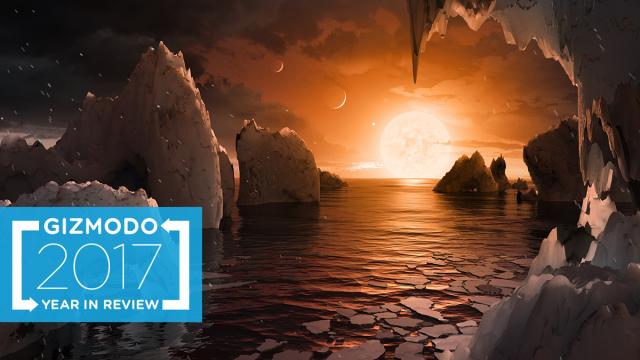Science may be just a tool to help us understand our universe. But we can all agree that one of its major perks is that it leads to the discovery of plenty of really cool, mind-boggling stuff.
Image: NASA/JPL-Caltech
This year science was as good as ever, which is to say that people still did a whole lot of searching, analysing, paper publishing and announcing. Astronomers, biologists, archaeologists and even particle physicists found important new things with important implications for their respective fields. Some of these new things were especially cool.
From stars colliding millions of kilometres away to advances in our understanding of the tiniest particles, and with our own planet somewhere in between, this year brought plenty of new scientific discoveries. Some were worrisome, others interesting as hell, and some were downright explosive.
Two neutron stars collided and reshaped astronomy forever
2017 will forever be remembered as the year that scientists officially entered the age of gravitational wave astronomy.

Artist’s illustration of two merging neutron stars. (Image: National Science Foundation/LIGO/Sonoma State University/A. Simonnet)
Several times now they have observed the truly incredible phenomenon of black holes many times the mass of the Sun slamming together, radiating their energy as ripples in spacetime that reach Earth. Experiments called LIGO and Virgo detect these changes through the way they alter the alignment of a pair of laser beams pumped through several-kilometre-long tunnels.
But in October, those gravitational waves came with a friend. Observatories all over the world spotted optical light, X-rays, radio waves and gamma rays all originating from the same place: A pair of neutron stars slamming together 130 million light years away.
By analysing these stars, scientists realised that a large fraction of the universe’s heavier metals, such as gold, platinum and uranium, originated from these cataclysmic events. They also found another way to help measure the rate at which the universe is expanding, a hotly debated topic. Let’s just say that from one observation, a whole lot of science happened and will continue to happen.
Particles uncover a hidden void in the Great Pyramid of Giza
It’s rare that Egyptology and particle physics mix. But in November, scientists made a truly baffling observation using the cosmic particles blasting Earth from outer space. They found a new void at the centre of the famous Great Pyramid of Giza.
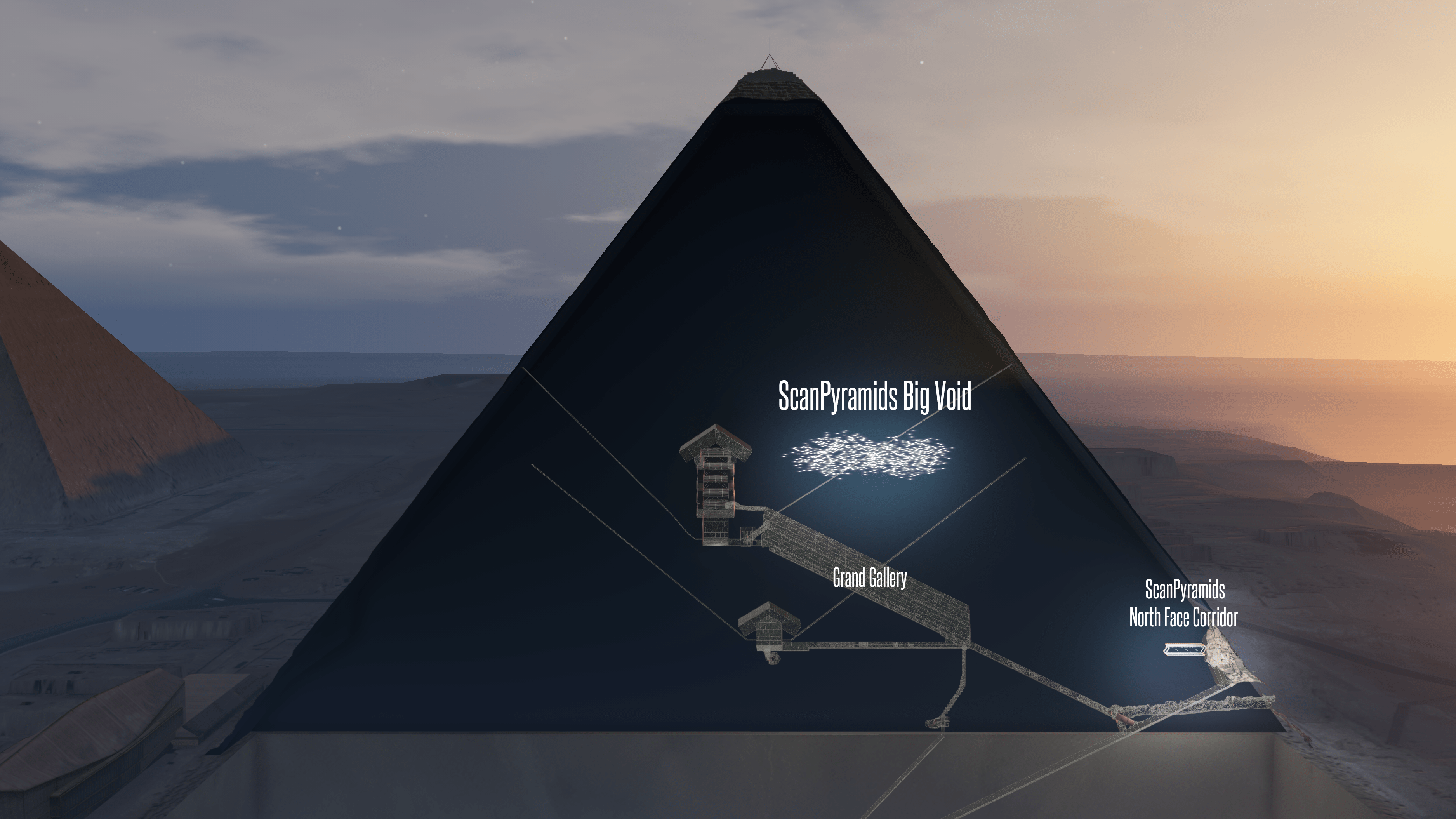
Cross section of the Great Pyramid showing the location of the void. (Image: ScanPyramids Mission)
The discovery used muons, or particles that result from outer space radiation interacting with the Earth’s atmosphere, and detected how they travelled through the pyramid’s rock. It’s kind of like an X-ray, and they unveiled the cavity directly above the pyramid’s Grand Gallery.
The French and Japanese teams of researchers don’t call their discovery a “chamber”, since it could really be anything at this point. More study is obviously needed, but doing so might require drilling which would require conversation with Egyptian authorities.
A bunch of new animals look just like dicks
This year, scientists discovered a lot of worms that looked like penises.
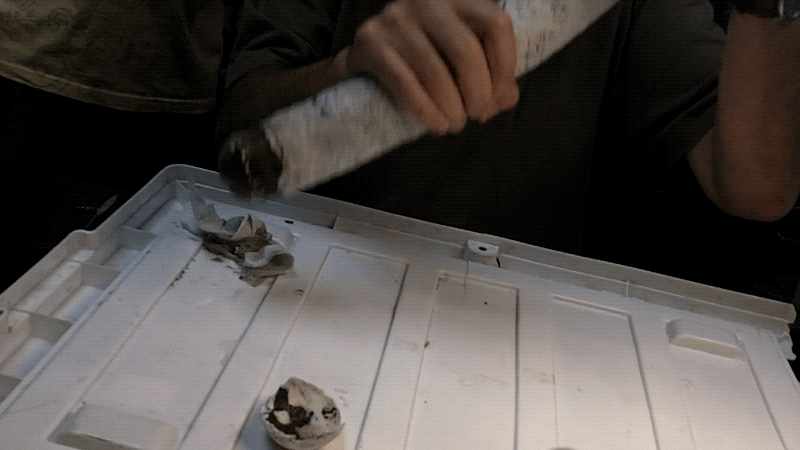
Credit: Marvin Altamia
Perhaps most excitingly, for the first time, they spotted the dark, slobbery phallus dwelling inside the giant shipworm shell. These crazy worms live in the mud of Philippine bays. They survive thanks to a symbiotic relationship with bacteria, which help to convert the hydrogen sulfide in the mud to food that can be eaten by the shipworm. Scientists were really excited to spot them.
But other dicks joined the giant shipworm. There’s this new species of worm snail that doesn’t quite look like a penis but sounds exactly like one, ejaculating mucus out of its base in order to eat. And the entire internet issued a collective “um” when the RV Investigator spotted this extremely phallic Sipuncula. If you look hard enough, really everything deep down there looks kind of long and fleshy, even the deepest sea fish ever which received its name this year.
An enormous new iceberg broke off of an Antarctica ice shelf
The world was on watch for the first half of 2017 as an enormous crack developed in the Larsen C Ice Shelf Antarctica’s coast. The result was a 5800km2 iceberg half the size of Jamaica set afloat in Weddell Sea.
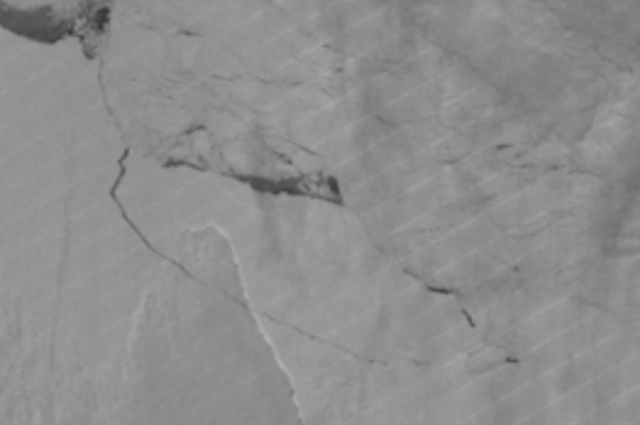
NASA Suomi VIIRS panchromatic image from 12 July 2017, confirming the calving.
Scientists wouldn’t directly blame climate change for this behemoth. True, some calving and exacerbation of the effect could be caused by the warming globe. But ice shelves frequently calve, and the cracks in Larsen C have been around since the 1980s.

A remarkable shot of A-69, revealing the extent of its size. (Image: NASA/John Sonntag)
Scientists don’t know what will happen to the ‘berg, but odds are it will break up into pieces and possibly melt due to the warming ocean waters. And as the Earth does warm, they will need to continue monitoring how the changes might affect this iceberg and others that will inevitably join it.
A lamb incubated in an artificial womb
No, it isn’t The Matrix. Scientists were able to incubate extremely premature lambs in fluid-filled bags for a record four weeks and observe them developing normally.
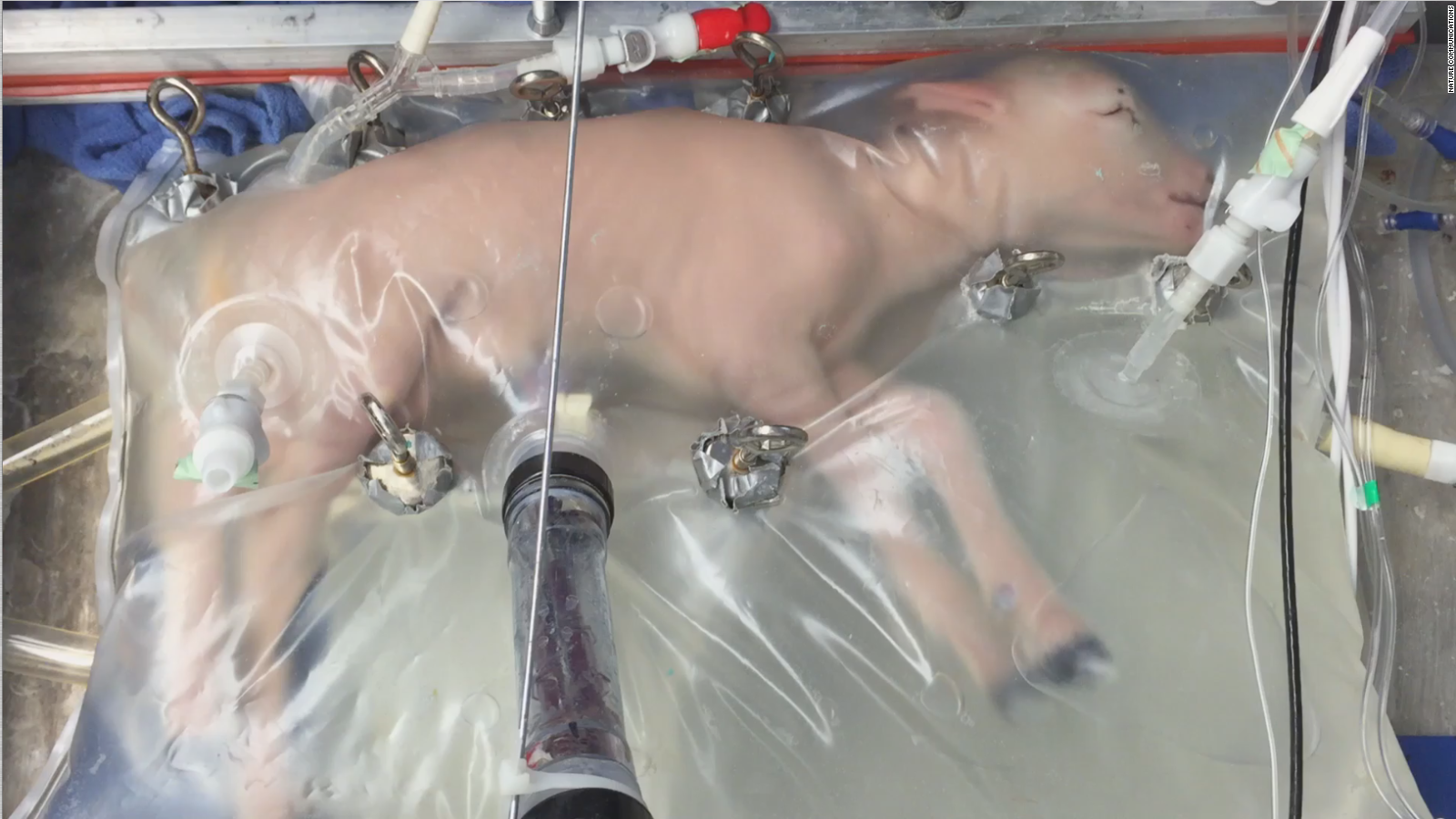
A lamb in an artificial womb from a team at the Children’s Hospital of Philadelphia. (Image: The Children’s Hospital of Philadelphia)
Other teams have done something similar a few years ago, but this time around the sacks were powered by the lamb’s own heart. Each lamb survived in the fluid-filled sack based on a system that pumped blood through the umbilical cord into a special oxygenation machine. At least one of the lambs was still alive as of April.
The scientists behind the system said it isn’t meant to remove the mother from the birthing process, but rather help extremely premature infants, such as humans at 23 weeks, make it to a safer gestational age. It isn’t ready for human use yet – lambs and humans are very different – but don’t be surprised if one day you hear about a premature infant brought to term in a high-tech Ziplock.
Scientists found many potential prospects for life, both distant and nearby
You might remember back in 2016 when scientists announced that our closest star, Proxima Centauri, had its own temperate planet, Proxima Centauri b. But This year brought but several different discoveries that have had plenty of people whispering “aliens”. Back in February, scientists discovered a whole solar system of Earth-sized exoplanets around an ultracool red dwarf star called “TRAPPIST-1”.
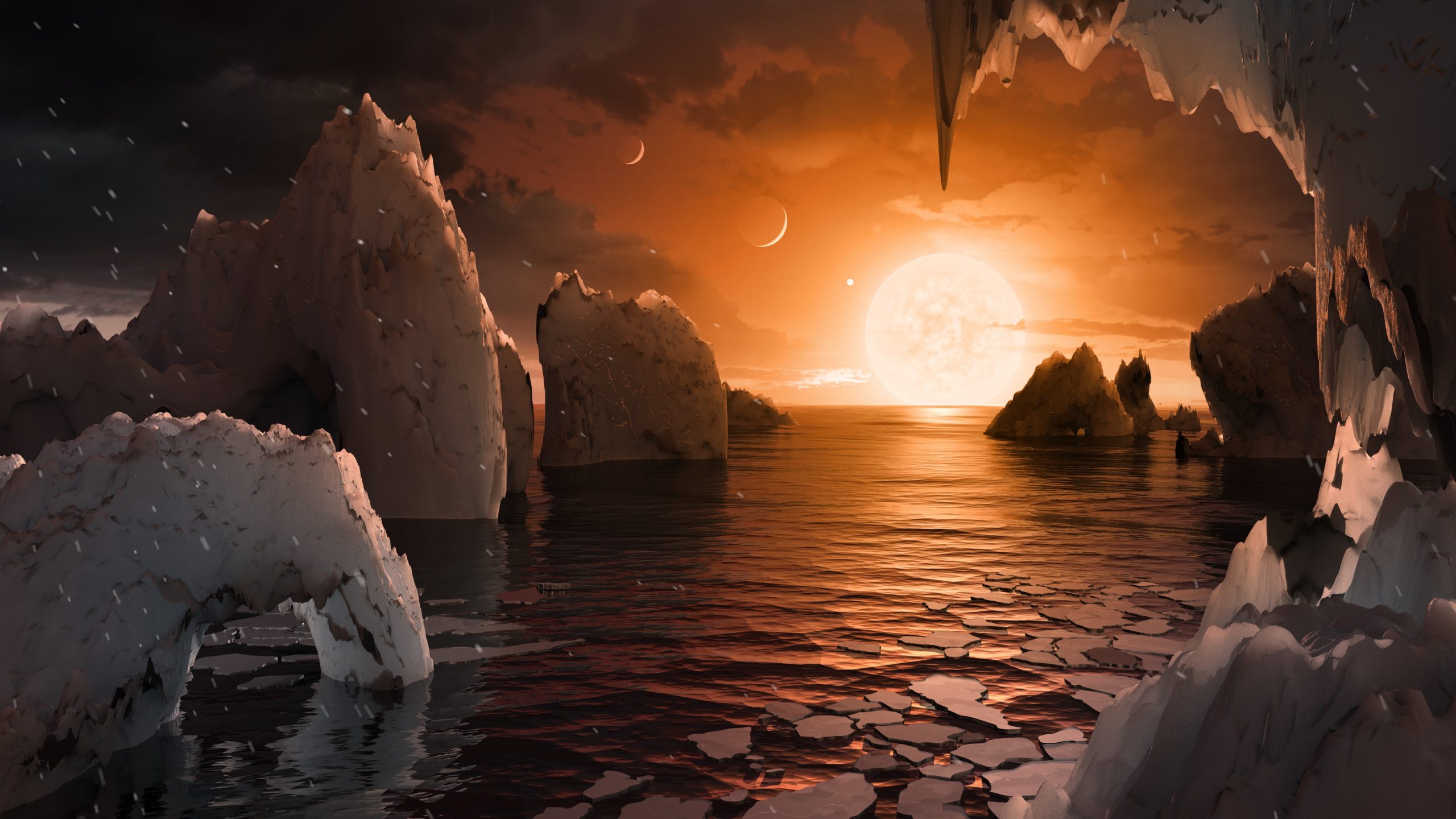
Image: NASA/JPL-Caltech
Just two months later came yet another incredible discovery, an exoplanet called LHS 1140b orbiting the LHS 1140 star only 40 light years away. Folks worry that Proxima Centauri is too active to harbour life. LHS1140 is much quieter, making it a potentially better target.
But wait – there’s more. At 40 light years, LHS 1140 is probably a little too far away to reach with a human-made spacecraft any time soon. Nearby stars Tau Ceti and Ross 128 at 12 and 11 light years away both have exoplanets that could potentially sit inside their stars’ habitable zones. Tau Ceti is a lot more like our Sun than Ross 128, but Ross 128 is also quieter than Proxima Centauri.
Ultimately, what this year has shown is that, when it comes to Earth-like planets, the best places to look might be the large number of dimmer, cooler red dwarf stars hiding throughout our stellar neighbourhood. And if it’s life you seek, perhaps it’s best we visit Enceladus, which seems to have a warm ocean and all of life’s basic ingredients beneath its surface ice.
Our species has been around for much longer than we thought
New discoveries clouded humanity’s origin story this year. You’ve probably heard the idea that our species, Homo sapiens, originated from one part of Africa around 200,000 years ago. But scientists discovered five new H. sapiens specimens far from the traditional origin spot in Northwestern Africa that were dated some 100,000 years earlier. The story is now that early H. sapiens existed perhaps all over Africa as long as 300,000 years ago.
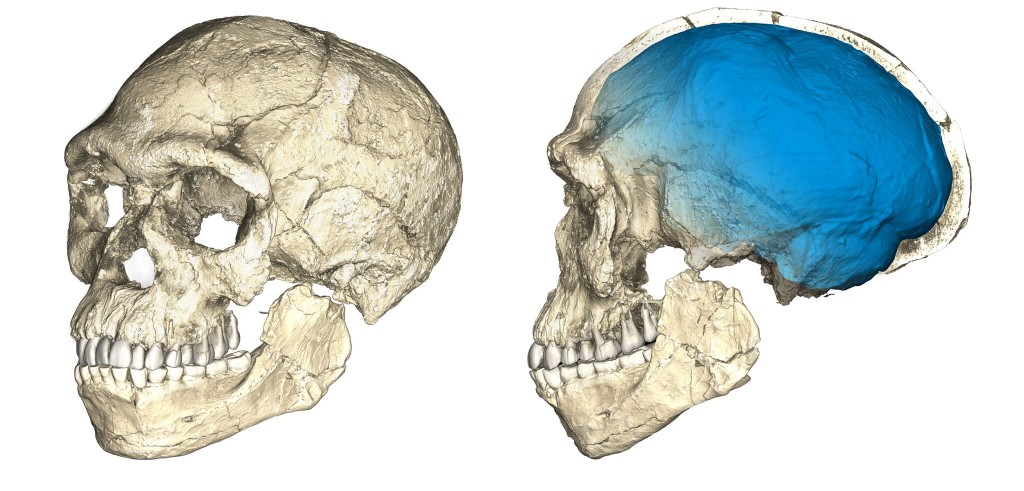
Two views of a composite reconstruction of the earliest known Homo sapiens fossils from Jebel Irhoud (Morocco) based on micro computed tomographic scans of multiple original fossils. (Credit: Philipp Gunz, MPI EVA Leipzig)
Scientists had previously located fossils in a cave this Moroccan site and dated them to 40,000 years ago. The new team decided to head back for further excavations. They spotted the five specimens in a cave near a quarry, alongside animal bones and tools – and used a new technique to accurately age the fossils.
Other scientists have released papers retelling H. sapiens‘ stories too. One group concluded that humans left Africa 270,000 years ago, many years before the original supposed African departure. And one controversial paper claims humans inhabited Southern California 130,000 years ago, 10 times earlier than other estimates. Others were sceptical of this research.
Either way, just know that humanity’s story isn’t set in stone. Well, techincally it is, if you count fossils as stone. We just don’t know if we’ve found all the stones.
Dinosaur feathers and entire birds were found trapped in amber
Several of this year’s most astounding finds came from the same place: The amber mines of Myanmar. That includes a whole new species of insect, hundred million year old intact dinosaur tail feathers, and a nearly complete baby bird. But that isn’t all. Another of this year’s amber discoveries seemed to come straight from Jurassic Park: A tick from the Dominican Republic that appeared to be full of monkey blood.

Image: Lida Xing
Amber specimens are still fossils and don’t preserve DNA very well, so don’t expect an actual Jurassic Park. But as we’ve reported previously, these specimens can preserve tiny microscopic and three-dimensional details in ways that traditional fossils might not be able to.
Frequently, these incredible specimens sort of just turn up in markets – so don’t be surprised if 2018 brings even stranger things trapped in amber.
An interstellar asteroid whizzed by Earth
All of the comets Earthlings have ever observed have originated from the solar system. That is, until ‘Oumuamua came whizzing by. The nearly kilometre-long cigar-shaped rock flew past the Earth in October before shooting off into space, far faster than any Sun-orbiting rock could have.

Artist’s impression (Image: ESO)
But there’s more. The interstellar visitor seems to be made from the same stuff that comets are made from, metals and carbon. But this rock looked nothing like a comet, and was missing the fuzzy appearance and the tail. And the discovery implied that there could be way more of these fast-moving rocks from outer space than astronomers previously thought.
That’s scary, of course – one of these objects would probably be a lot more dangerous if they slammed into us than a Solar System-borne asteroid would be. And if there really are more of these strange objects than we previously appreciated, then it wouldn’t be surprising to spot another one, too.
Computers inched closer toward their quantum future
Quantum computers are a long way away from impacting your life in a meaningful way. But 2017 has been a landmark year in quantum computing’s early days.
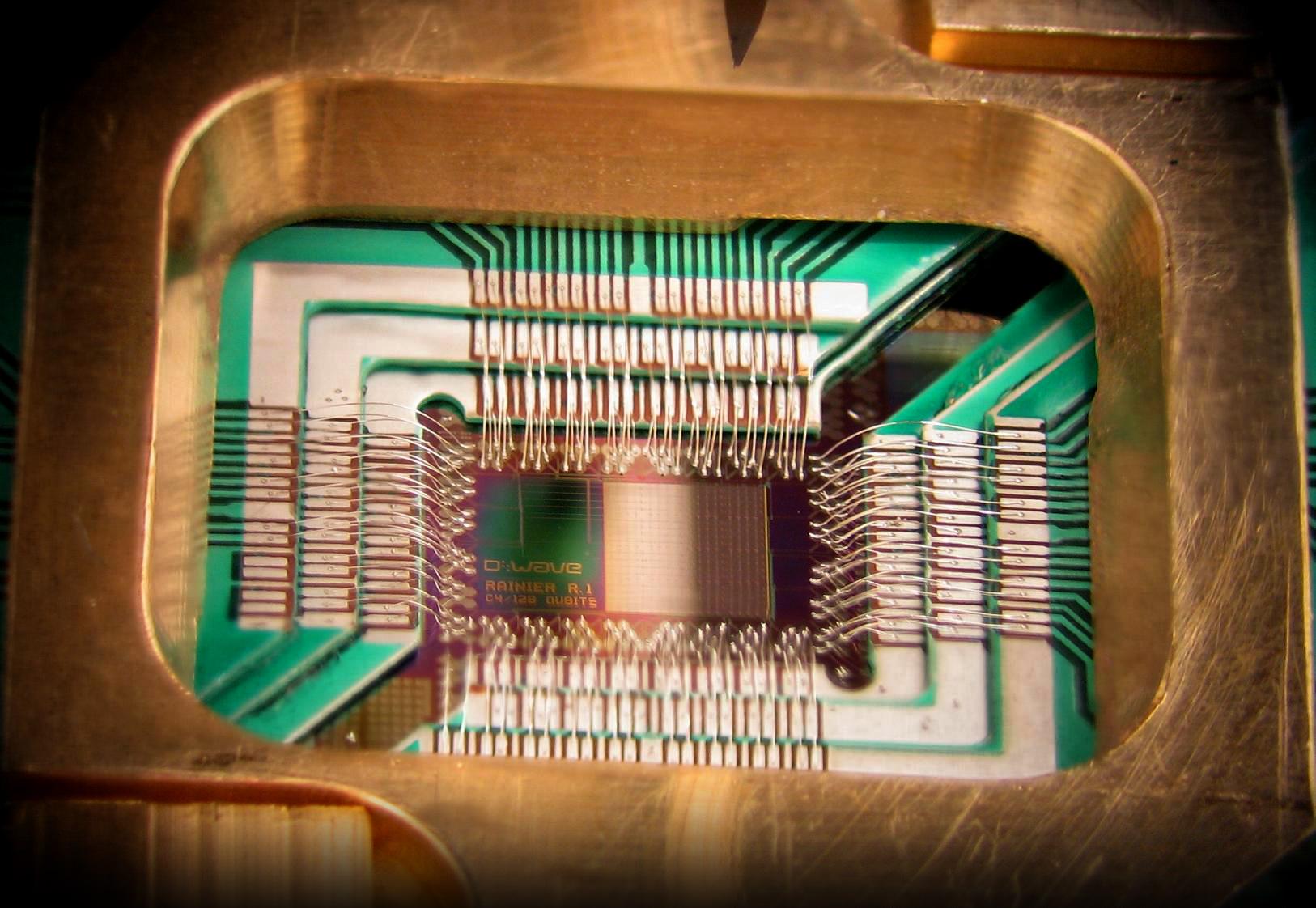
Image: D-Wave/Wikimedia commons
If you don’t know what a quantum computer is, you can read our primer here. But just know that all computers operate on hardware systems that manipulate bits, or series of ones and zeroes. Quantum bits, or qubits, can equal zero and one at the same time with an applied probability while the machine is doing a calculation, then they assume a zero or one value when you read out the answer. One day, these computers might be good at simulating the behaviours of molecules, optimising scenarios with a lot of moving parts (such as finding the best traffic patterns), and possibly cracking the way your secure data is stored.
IBM now has a 22-qubit quantum processor available to its clients based on a chip with a series of electronics held at near-absolute zero, with a 50 qubit system in the works. Another IBM machine was able to simulate molecules as large as beryllium hydride. Two other teams unveiled 51 and 53 qubit quantum machines that made real physics discoveries – though they weren’t general purpose quantum computers. In related news, China “teleported” quantum information about a photon into space, but here’s what that really means.
Quantum computers have not unambiguously beaten regular computers at any task just yet. But rumours are swirling that Google is on the verge of testing a 50-qubit machine that will demonstrate this “quantum supremacy” on a classically hard, albeit contrived problem.
Honourable mention: Uranus smells like farts
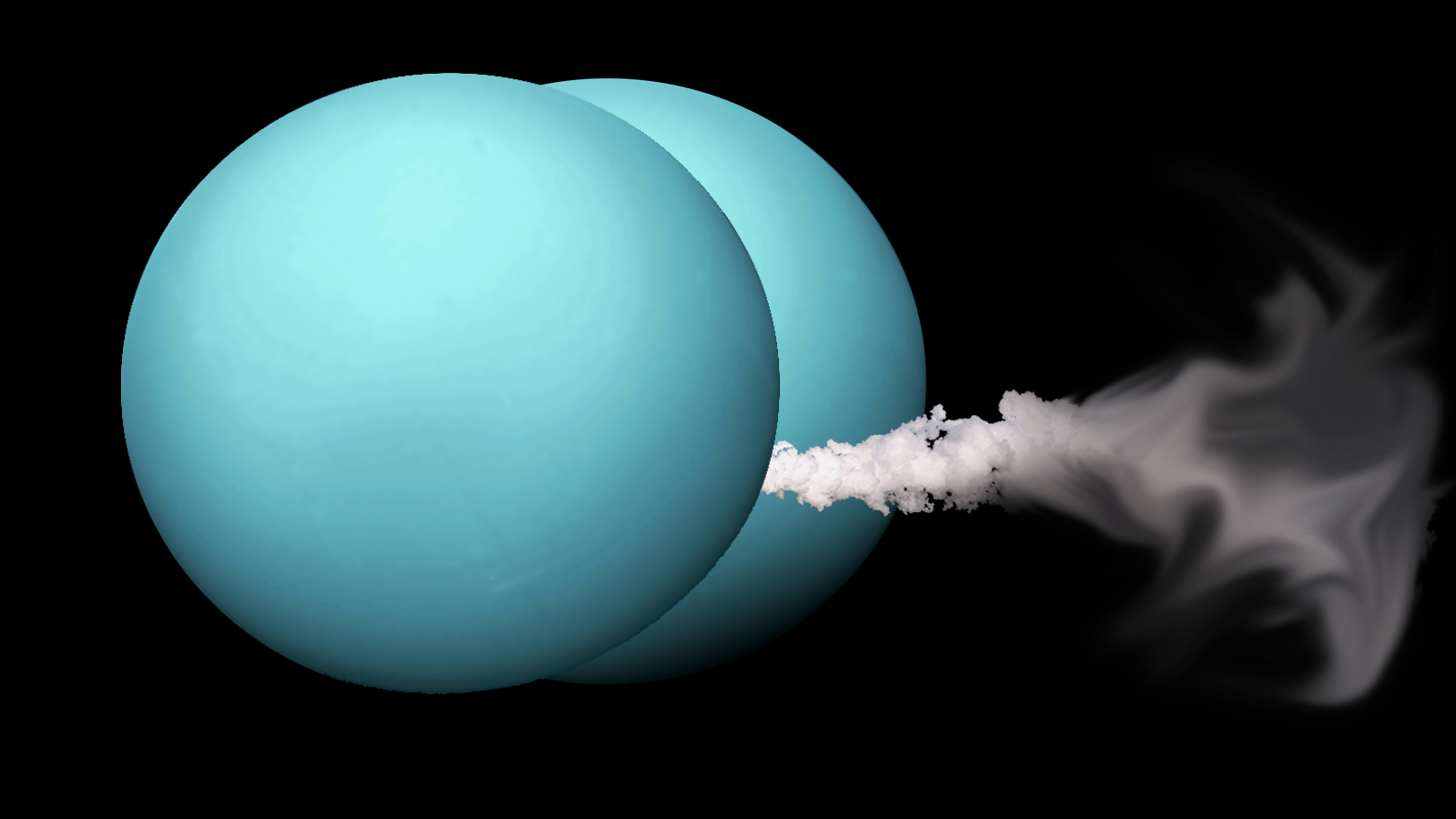
Image: Ryan F Mandelbaum/NASA/Walter Baxter
OK, scientists didn’t discover this, I sort of figured this out based on a few phone calls and some Googling. Be that as it may, I think this incredible detail is worthy of mention. Uranus smells like farts. And pee.
